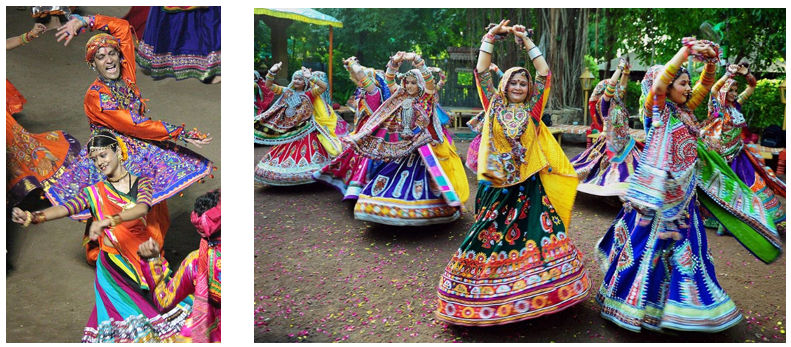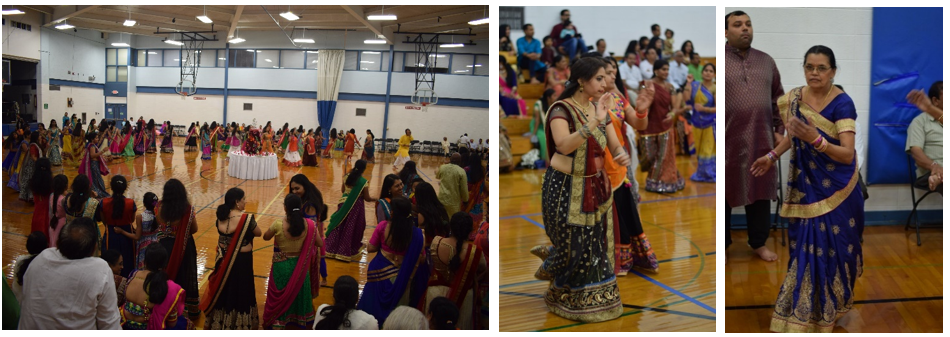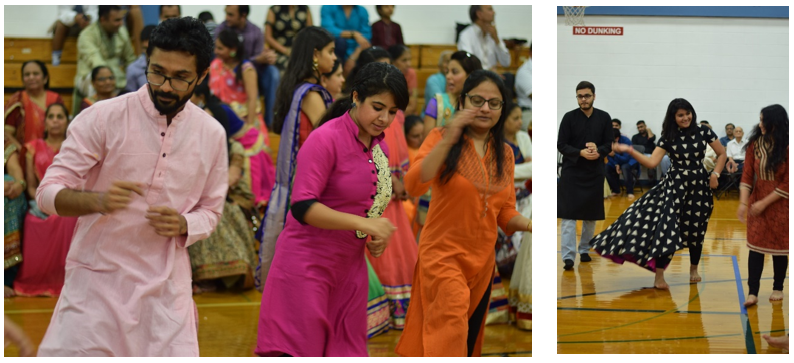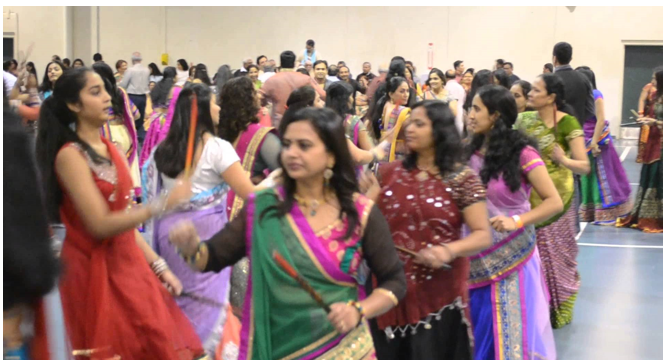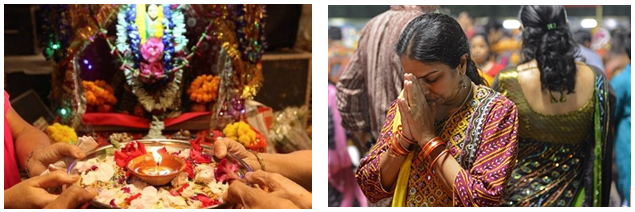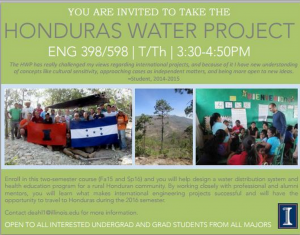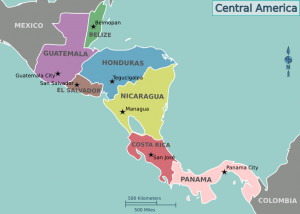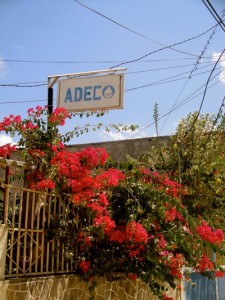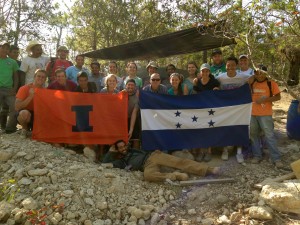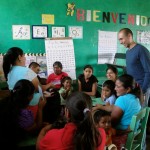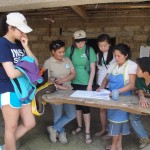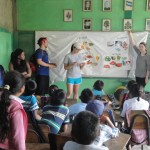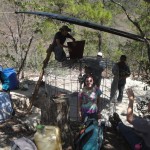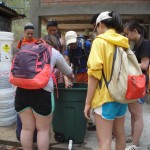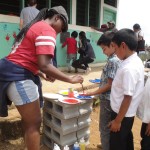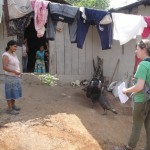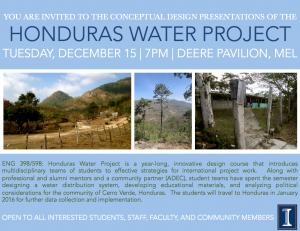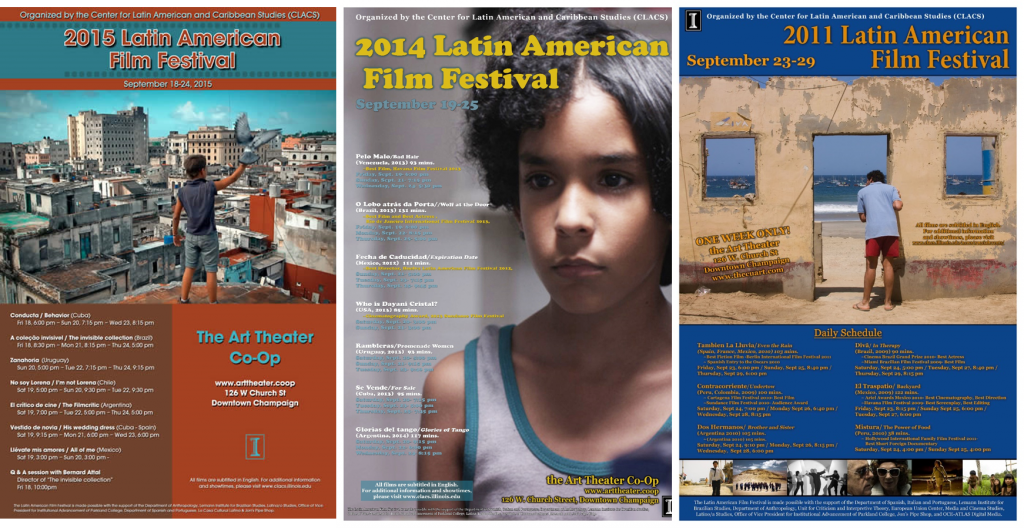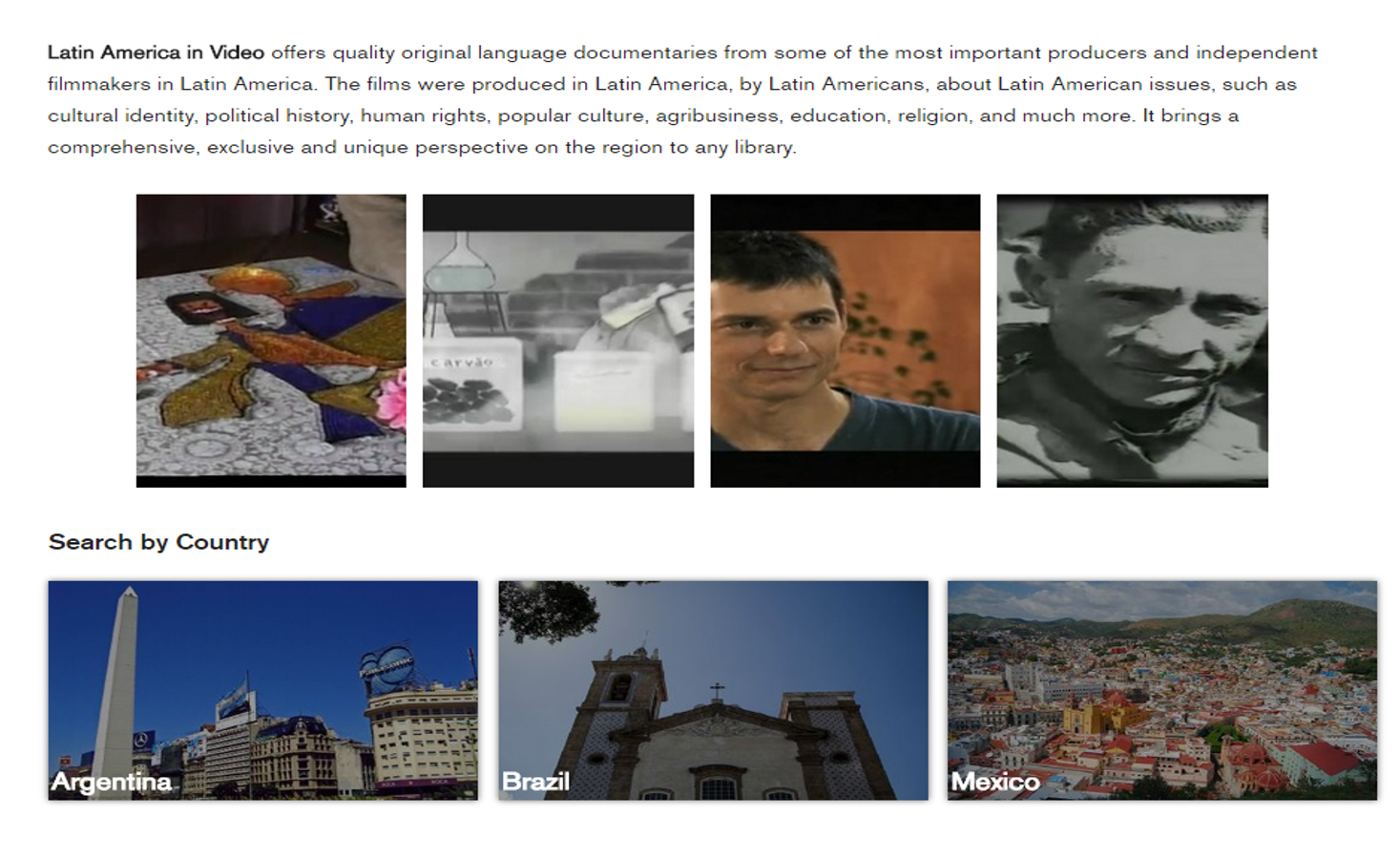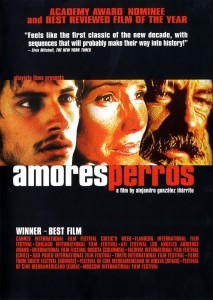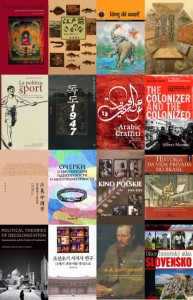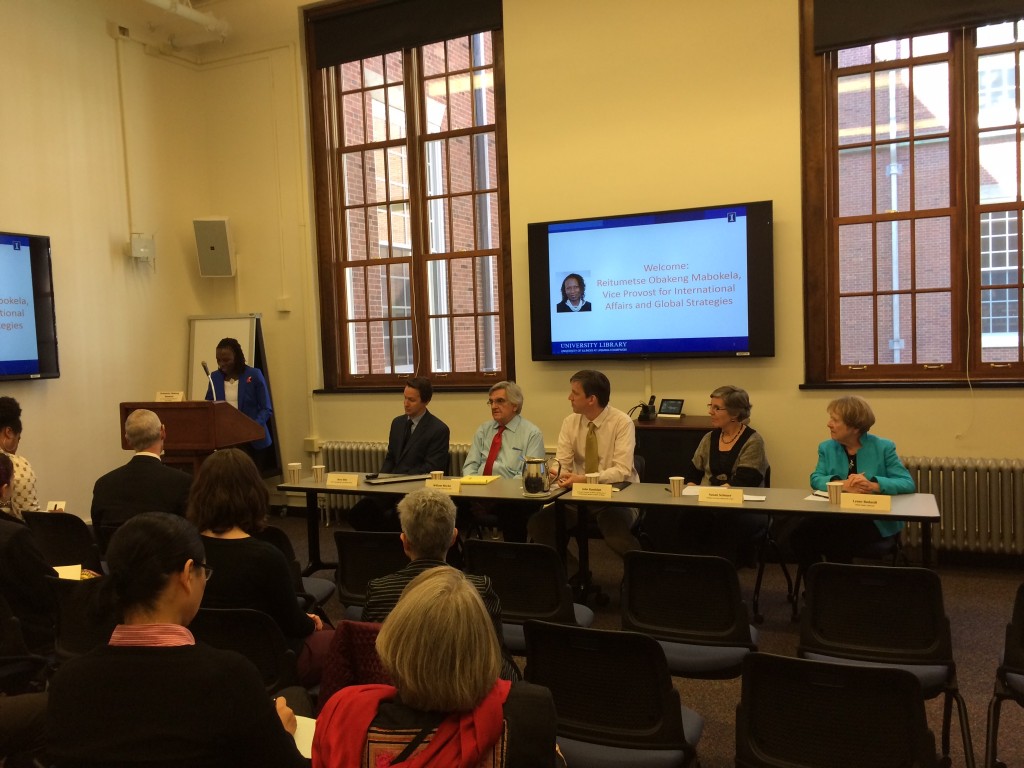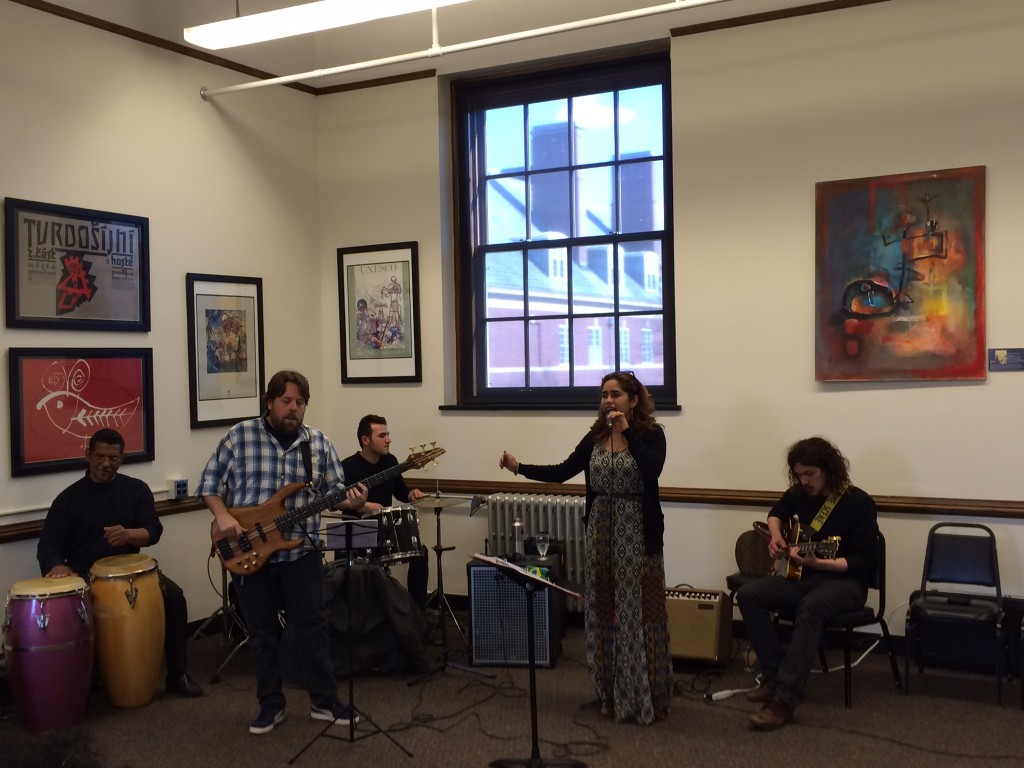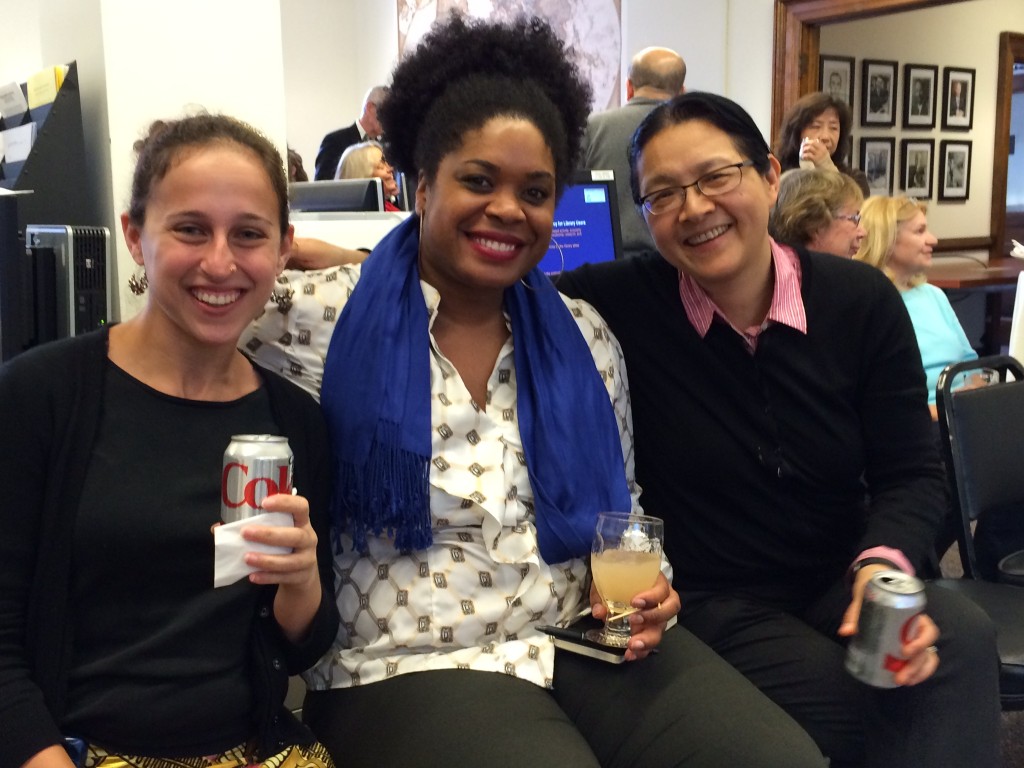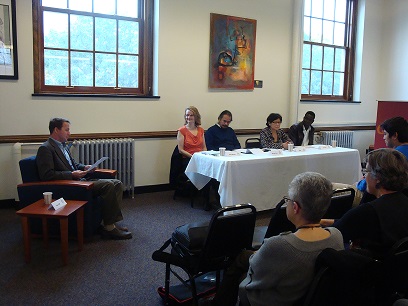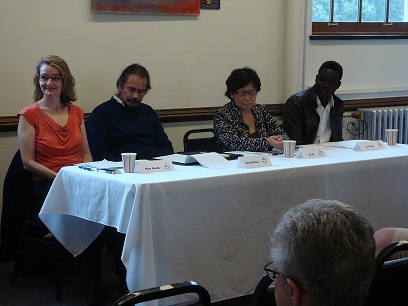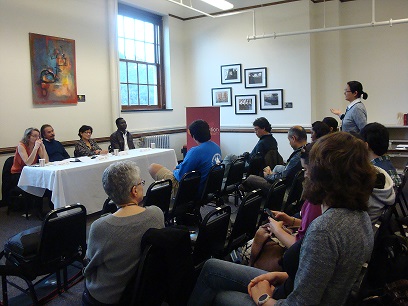Every year during the period of Navratri, the Indian Association at Urbana Champaign brings the festive vibe with Garba Raas and pooja. Garba is a form of dance that originated in the state of Gujarat, India.
It is usually performed for nine nights of Navratri around a centrally lit lamp or a picture or statue of goddess Durga, the feminine form of Divinity. Garba comes from the Sanskrit word Garbha that translates as womb, signifying ‘Source of Life’. Revolving dancers in concentric cycles represent the cycles of life, death, and rebirth with the only thing constant as the goddess, who represents the source of life.
The modern form of Garba is called Dandiya Raas which is traditionally performed by men using a pair of wooden sticks. Nowadays, Garba and Dandiya are merged together, creating a high energy dance form. The origin of the dance is traced back to the legendary myth of the fight between Goddess Durga and mighty demon king Mahishasura—the dance is an homage to their mythical fight. The dance sticks represent the sword and the dance form honors Durga’s victory over the demon.
Men, women and children wear traditional dresses with colorful embroidery and mirrors and dance to the music of the dhol, a type of double-headed drum, and Gujarati folk songs. The women and girls wear chaniya choli, a three piece dress with a colorful embroidered blouse decorated with mirrors, shells, beads and stars, a flared skirt and a long scarf wrapped around in the traditional way. They also adorn themselves with beautiful jewelry. Men wear a top called a kedia and pants known at pyjama, or a dhoti with an oxidized bracelet and a necklace.
The Indian Association of Urbana Champaign strives to provide a common identity for the local Indian community and facilitate cultural, social and educational services and opportunities for cultural integration for people of all ages. They also foster those activities that enhance mutual understanding and appreciation between the Indo-American community and the mainstream American community. They organize Garba and Dandiya Raas usually on the second weekend of Navratri. This year, it was at ‘Brookens Center Urbana Park District’ on Sep 22nd and 29th, Friday and Saturday. I was delighted to be part of the celebration this year. The event began with the opening prayer to Goddess Durga which included lighting the lamp and singing religious songs. The dancers began gathering around the statue of the goddess in concentric circles and started dancing to the Gujarati folk music played by the DJ. There were men, women, children and elderly people, all decked out in beautiful colors. With the soft beats, people started matching each other rhythms and following a pattern. It was amazing to see how they could sync with each other’s movements in an orderly way and generate a beautiful dynamic form.
Everyone was enjoying the dance form and participated with full spirit. Often women lead the men in the dance. They would clap their hands, step forward and backward, swirl around and move ahead repeating the pattern. Even the elderly were dancing passionately! Apart from the Indian families in attendance, there were a lot of U of I students that excitedly participated in Garba Raas. A lot of those students weren’t part of the Gujarati community, but had come to celebrate the auspicious time of Navratri and to experience the pleasure of this traditional dance form. Experts in Garba including both students and adults, were there to teach to the rhythms of Garba to the uninitiated. Even the newbies were merged into the circles and helped them grow larger and larger. I was keen on learning these fascinating dance steps and was guided well by friends who were skilled at it. Soon I could swing like other dancers and became a part of the concentric formations of dance.
After a while, the dancing switched from Garba to Dandiya where people started using sticks, holding one in each hand, and dancing around the idol. I was excited to try the colorful sticks for dancing. There were several smaller groups that began creating their own rhythm with sticks clashing against each other on the beats of the songs. I started dancing with 5 other people, forming pairs within the group and continuously switching partners while dancing with the music. The songs were mostly fast paced now, with swift movements and changing partners after every beat or two. Beads of sweat glistening on almost every dancer’s forehead, the enthusiasm was too high to tire them. Those small groups merged into one big circle that was creating a spiritual energy focused in the center of the hall towards goddess Durga.
There were refreshments too including lemonade, savory Indian snacks like samosa, and desserts like gulab jamun and kheer. Set up on a table in one corner, whenever the music would get a little low, people would take short breaks and refresh themselves with food, feeling all the more energetic for continuing their dance.
The whole dance session came to end with an elaborate worship ritual of the Goddess Durga by everyone. A priest, with a plate containing flowers, a fruit and an oil lamp offered the Goddess his and everyone else’s devotion and prayer. All of us sang the devotional songs in unison and thanked the goddess for the blissful life, family, friends, and a chance to celebrate these auspicious days with them.
The celebration brought students, families and even non-native Indians together, irrespective of which part of India or the world are they from. No one identified there as a Gujarati, Bengali or Punjabi, but as someone who came to immerse himself/herself into the magnanimous aura of the Goddess Durga and the power-packed dance form. Many Indian students and family here miss their country, hometown, and families– most especially during Navratri and Diwali. This is the third year that I am away from home for Navratri and Diwali celebration and this period always makes me wanting to go home but the celebration made me feel as if I have a family here as well that celebrates the festive spirit with such love and warmth. Events and celebrations like these bring us closer and let us form one big family here, away from home, rejoicing in our culture, traditions, and values no matter where we are in the world.
Saloni Chawla
Graduate Teaching Assistant
Department of Landscape Architecture
University of Illinois at Urbana Champaign
References:
- Photography Courtesy: Sai Kalyan Evani
- http://www.cuindianassociation.org
- The Oxford Encyclopedia of the Music of India, Oxford University Press.
- Kumar, D. Kesarīyo ranga [sound recording]: Garba songs. 1988. Mumbai: Oriental Gramophone Record Co.
- “Navratri special: Significance of Garba, Dandiya dance forms”. india.com. Last modified September 30, 2016. http://zeenews.india.com/exclusive/significance-of-garba-dandiya-dance-forms_1471986.html
- Maheta, Mrudula Eka. Gujarātanā utsavo ane meḷā = Festivals and fairs of Gujarat. Ahmedabad: Gujarat Universtity, 1984.


